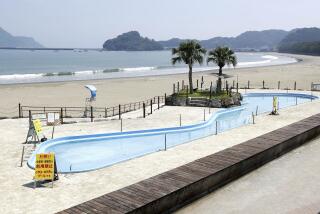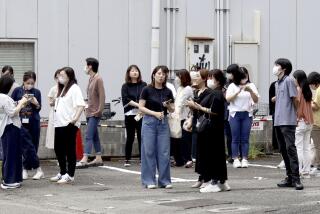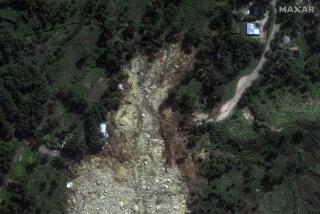Japan quake death toll climbs
The enormity of the human toll from Japan’s worst earthquake in recorded history pressed persistently into the consciousness of the island nation’s rattled citizens as rescue workers extracted thousands more bodies from the coastal wastelands that were once thriving communities.
More than 1,000 bodies washed ashore Monday in Miyagi prefecture, the northeastern area hardest hit by the magnitude 8.9 quake that struck offshore on Friday and the devastating tsunami it triggered. Search-and-rescue crews, now finding few survivors among the waterlogged debris, extracted about 2,000 corpses on the fourth day of the disaster that Prime Minister Naoto Kan has proclaimed Japan’s greatest national tragedy since World War II.
Confronted with an escalating threat from three reactors at a nuclear power plant damaged by the earthquake, Kan’s government turned to the International Atomic Energy Agency with an appeal for “expert missions” to help avert major releases of radioactivity.
Photos: Scenes of earthquake destruction
“The reactor vessels have held and radioactive release is limited,” Yukiya Amano, director general of the United Nations’ nuclear agency, said in a statement from its Vienna headquarters.
But the Kyodo News Agency reported that fuel rods at the damaged plant’s No. 2 reactor had been fully exposed after its cooling system malfunctioned, suggesting that its core had begun to melt from the overheating.
A hydrogen explosion early Monday in the No. 3 reactor housing was thought to have disrupted the power to the seawater pump helping to cool the No. 2 reactor, causing the temporary core exposure blamed for doubling radiation levels outside the power complex. Japanese authorities continued to insist, however, that there was little risk to the public or environment.
“We have no evidence of harmful radiation exposure,” said Cabinet official Noriyuki Shikata.
The fate of tens of thousands of residents of the worst-hit areas remained unknown, authorities reported, stirring fears that the death toll, still officially under 2,000, would greatly exceed the 10,000 predicted over the weekend.
In the town of Minamisanriku alone, more than 10,000 people -- about half the population -- remained unaccounted for on the fourth day after the devastating quake and tsunami, Kyodo reported.
Photos: Scenes of earthquake destruction
Emergency shelters housing more than 550,000 displaced by the disasters were running short of food, water and fuel, and the Japan Meteorological Agency warned that snow forecast for the northeastern areas beginning Wednesday was likely to worsen the plight of the evacuees.
More to Read
Sign up for Essential California
The most important California stories and recommendations in your inbox every morning.
You may occasionally receive promotional content from the Los Angeles Times.











